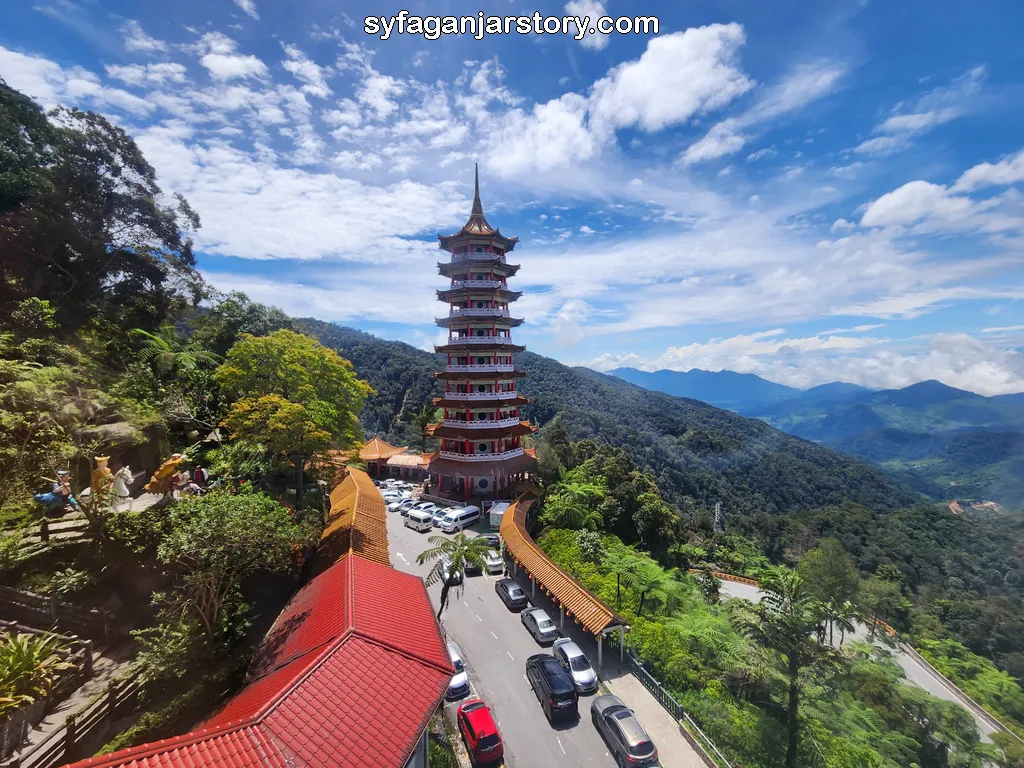Resorts World Genting, a high-altitude resort in Malaysia, has always been an enticing spot for tourists. And what could be a more breathtaking way to ascend to this elevated destination than by a scenic cable car ride? The panoramic view of the surrounding mountains and forests offers a splendid spectacle to all visitors.
Presently, two cable car systems serve the resort - Awana Skyway and Genting Skyway. The Awana Skyway is the regular daily operator now.
However, during specific scenarios, such as routine maintenance, the Genting Skyway steps in as a stand-in. I've been fortunate enough to experience both cable car systems — I tried Genting Skyway in 2016 and Awana Skyway with my wife in 2022.
Considering the interest expressed by many readers about the differences between these two cable car systems, I've decided to delve deeper into this topic in this article.
Genting Skyway's introduction to the public happened back on February 21, 1997. The then Prime Minister of Malaysia, Tun Dr. Mahathir, officiated the inauguration. For nearly two decades, Genting Skyway was the main mode of transportation to the Resorts World Genting.
However, a newcomer arrived in August 2016. As part of a significant renovation at Resorts World Genting, the Awana Skyway came into service. Since then, it has taken over as the primary cable car operator for the resort.


Genting Skyway operates between two stations — Gohtong Jaya Station at the lower end, and Resort Hotel Station at the peak. There are no intermediate stops, which means passengers get a non-stop journey straight to their destination.
Unlike Genting Skyway, Awana operates across three stations: Awana Station, Chin Swee Station, and SkyAvenue Station. Awana Station serves as the lower terminal, marking the start of the breathtaking journey.
Conversely, SkyAvenue Station, positioned at the top, is the final stop and located within the Resorts World Genting complex. This station provides passengers direct access to the host of entertainment, dining, and shopping options the resort is known for.

The middle station, Chin Swee, is conveniently located near the famous Chin Swee Temple, renowned for its stunning pagoda and picturesque scenery. Visitors can explore the temple without an entry fee, making it an enticing detour.
What's more, if you're on the cable car from Awana Station or SkyAvenue Station, you can resume your journey without purchasing another ticket, making it a flexible, value-for-money excursion.


The Genting Skyway boasts a 3.3-kilometer route that stretches across Mount Ulu Kali in Genting Sempah area. Sometimes, the mountain path is enveloped in fog, providing passengers with the ethereal experience of floating above the clouds.
On the other hand, Awana Skyway's route is slightly shorter, spanning 2.4 kilometers. The Awana Station's closer proximity to the Resorts World Genting accounts for this reduced distance.
Both cable cars have different lengths of routes, which makes the travel times different. Even though they move at the same speed (6 meters per second, which is 21.6 kilometers per hour), Genting Skyway takes about 15 minutes because it has a longer route.
On the other hand, Awana Skyway only takes about 10 minutes because it has a shorter route. Remember, these times can change if the weather is different.


The final key difference lies in the type of gondolas used by the two cable car systems. The Genting Skyway features a single gondola type, whereas the Awana Skyway offers two: a standard gondola and an eye-catching glass-bottomed gondola.
The latter provides an exhilarating viewpoint for passengers, allowing them to savor the landscape from multiple angles. I personally recommend trying out this unique glass-bottomed gondola experience. Please take a look at our article when trying the glass-floor gondola below:
Another notable difference exists within the seating arrangements. In the Genting Skyway gondola, seats are arranged to face the vista ahead, giving each passenger a clear, uninterrupted view.
Conversely, the seats in Awana Skyway gondola face each other, enhancing social interaction amongst passengers. Furthermore, this layout offers a wider area, enabling passengers to comfortably bring their luggage onboard.

In addition to the structural differences, there are distinct discrepancies in the passenger capacity of the gondolas used by both the Genting Skyway and the Awana Skyway.
The Genting Skyway's gondolas have been designed to comfortably accommodate up to eight passengers, arranged in a way that four face forward, and the other four face backward. This configuration promotes interaction among the passengers, while also ensuring they enjoy the panoramic views on offer
On the other hand, the standard gondola on the Awana Skyway is slightly larger, capable of ferrying up to ten passengers at a time. Its counterpart, the glass-bottomed gondola, due to its unique construction, has a smaller capacity, carrying up to six passengers.
Given the difference in individual gondola capacities, it's natural that the total carrying capacity per hour varies between the two cable car systems. The Genting Skyway can transport up to 2000 passengers per hour, while the more advanced Awana Skyway surpasses that with a capacity of up to 3600 passengers per hour.
I personally observed this discrepancy when I was waiting to board at the station. The queue for the Genting Skyway was significantly longer than the one for the Awana Skyway, a clear testament to the latter's enhanced passenger-carrying efficiency.
With that, we have explored six fundamental differences between the Genting Skyway and the Awana Skyway cable cars. While I haven't delved into the technical aspects of the cable car systems due to a lack of expertise in that domain, these key differences should provide a clearer understanding for anyone planning a trip to Resorts World Genting.
Out of curiosity, I'd love to hear from readers who have personally experienced these cable car systems. What were your impressions of the Genting Skyway and Awana Skyway? Sharing your experiences would not only enrich this discussion but also provide valuable insights for future passengers!

